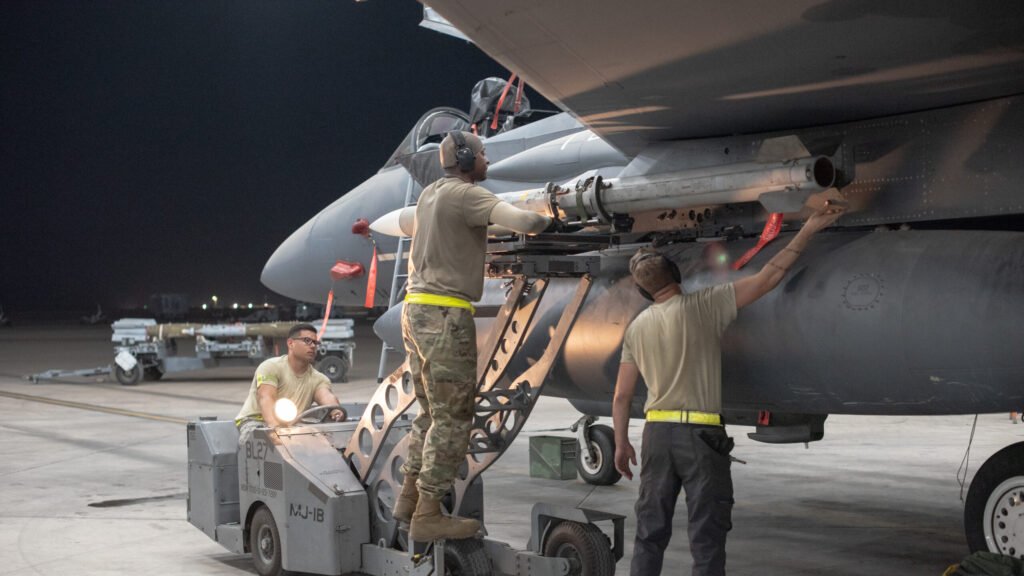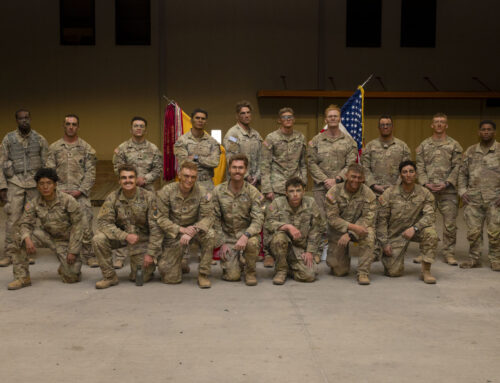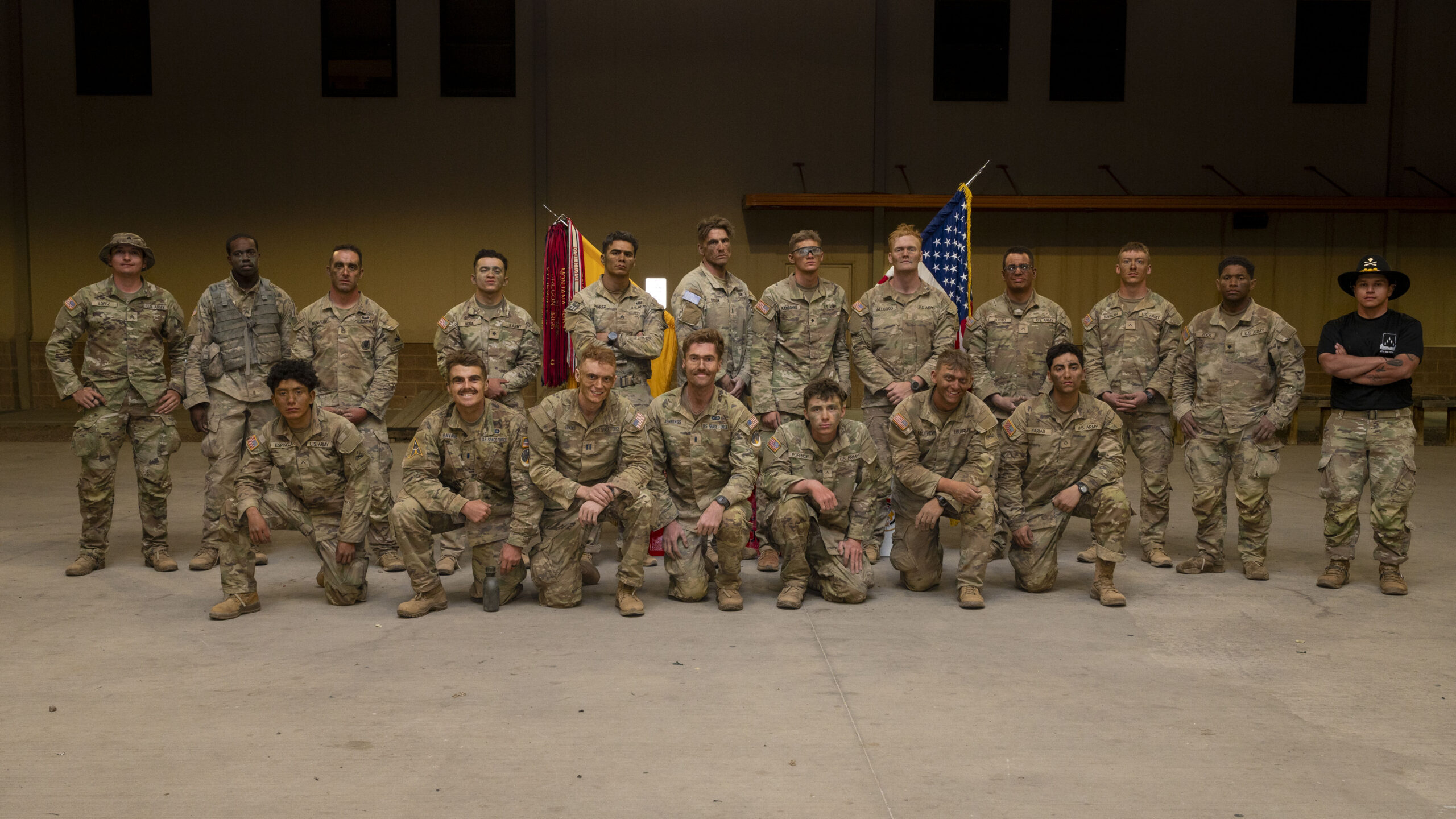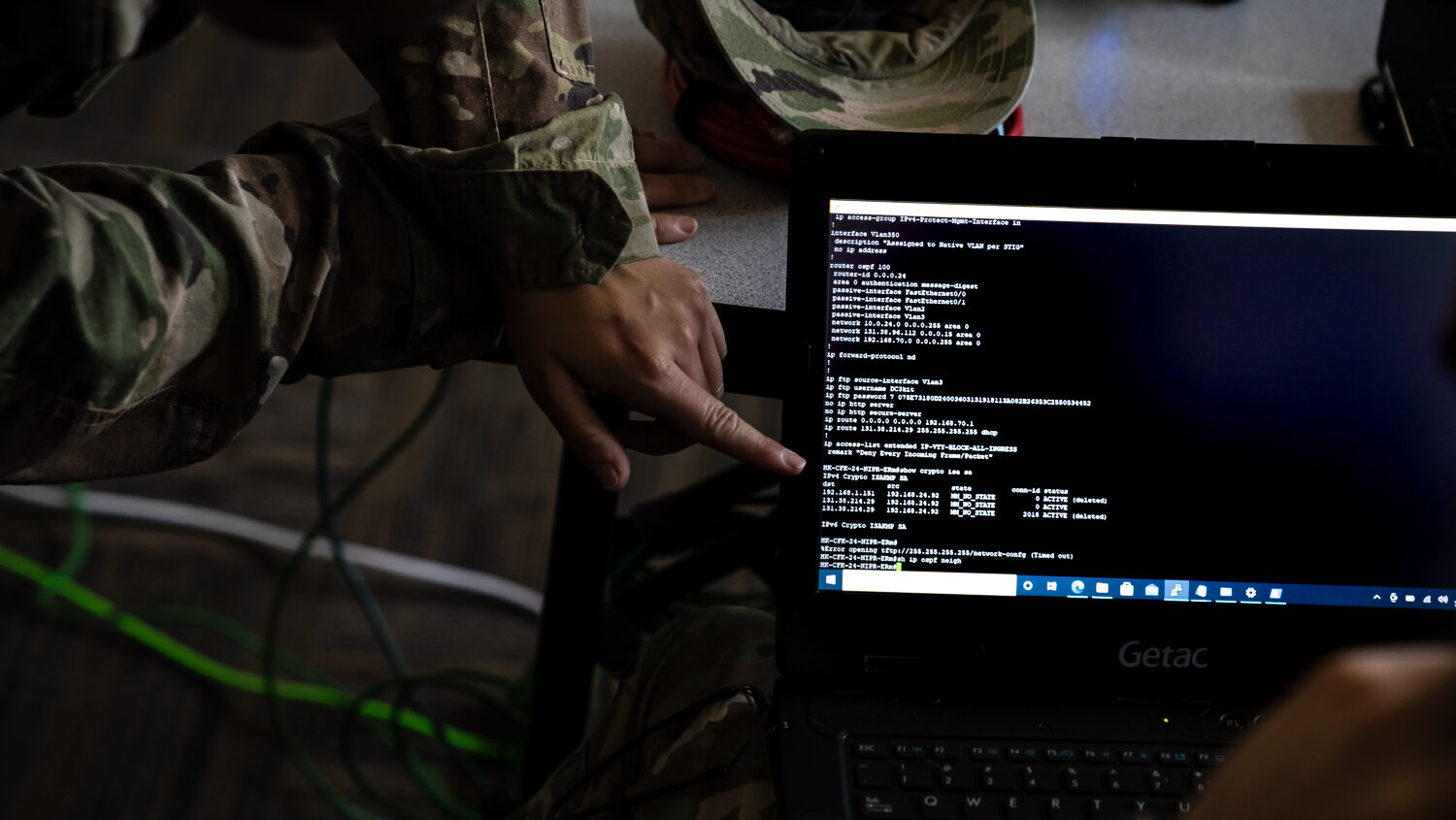An F-15E Strike Eagle weapons load crew team attaches an AIM-120D to a pylon July 15, 2019, at Al Dhafra Air Base, United Arab Emirates. (U.S. Air Force photo by Staff Sgt. Chris Thornbury)
FARNBOROUGH 2024 — A deluge of defense spending across the West amid the war in Ukraine and other conflicts around the globe has spurred defense giant RTX to accelerate production for multiple systems, according to company executives.
In briefings with reporters at the Farnborough air show, officials at the defense conglomerate’s Raytheon unit said work is underway to expand manufacturing of key systems like the Coyote interceptor and AIM-9X Sidewinder. Additionally, new partnerships agreed to or in the works are expected to increase supply of key components like solid rocket motors.
“We have never seen more demand for these weapons as we have in the last year-plus,” Paul Ferraro, Raytheon president of Air & Space Defense Systems, said about weapons like AMRAAM and Sidewinder in a briefing today.
Take the Sidewinder. Originally introduced back in 1956, the missile’s design has been upgraded and honed in the decades since, and it is now in such high demand that Raytheon plans to almost double its production. Today Barbara Borgonovi, the president of Raytheon’s Naval Power business, said the company and the US government are seeking to surge production from 1,400 Sidewinders annually to 2,500 by the program’s lot 25.
As for the AIM-120 AMRAAM, Ferraro reiterated previous comments about maxing out production at least through the end of the missile’s program of record later this decade.
Both missiles are surging in popularity in large part because of their extensive use in Ukraine, with allies transferring their own stockpiles to Kyiv and seeking replenishments as a result. Though both weapons are traditionally air-to-air capabilities, the two can also be launched from the ground with Raytheon’s National Advanced Surface-to-Air Missile System (NASAMS), jointly manufactured with Norway’s Kongsberg Defence & Aerospace.
Among the critical components needed for missile production are solid rocket motors (SRM), whose burgeoning demand is pushing new entrants into the market. Raytheon has launched new partnerships and now needs more, as Borgonovi said the company is seeking a third domestic SRM supplier.
Asked about a timeline for the new supplier, Borgonovi said “it takes years” to establish one, since “we have to have the robust qualification activities as part of that development cycle.” The company is “looking at multiple different sources of supply,” she said, which can contribute to “multiple products.”
And then there’s the drone threat. With Pentagon officials calling for more cost-effective solutions to counter relatively cheap unmanned systems, Raytheon is boosting production of the Coyote interceptor, a rail-launched weapon that carries a small warhead.
According to Tom Laliberty, president of Raytheon’s Land & Air Defense Systems, the company is increasing production of the Coyote by “250 percent,” which would lift output from around 40 units a month to approximately 100 by the end of 2024.
Pentagon acquisition czar Bill LaPlante urged the company to increase its production in the wake of proliferating drone threats, Laliberty said in a separate Monday briefing. He added that Raytheon is exploring improvements to the weapon’s seeker and propulsion tweaks to enable the Coyote to hit threats at higher altitudes.











